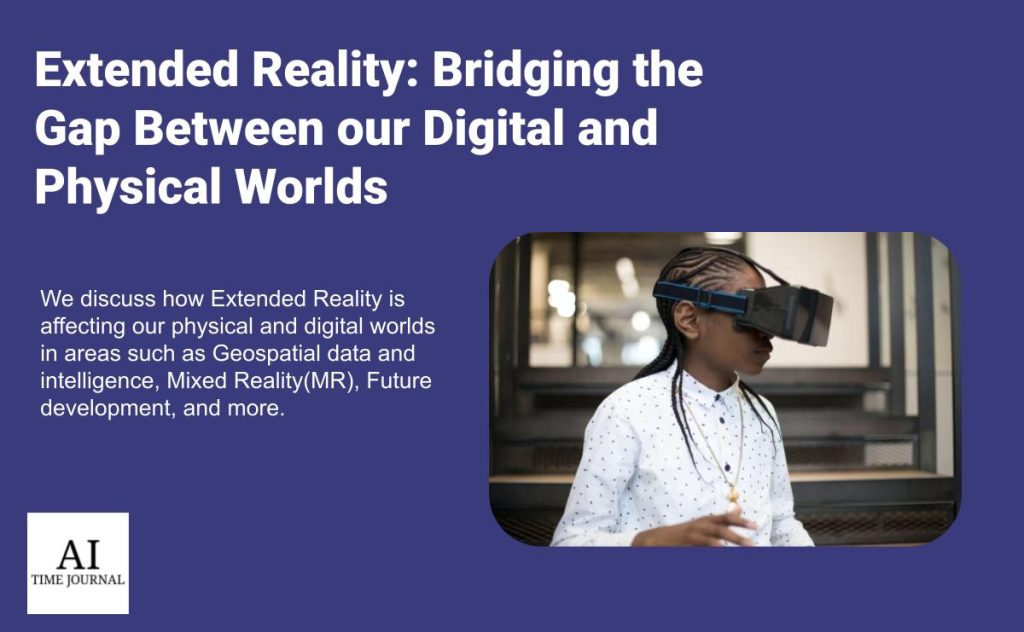
The extended reality, or XR, is a term that can be used to describe all technologies that make learning more immersive. Technology is blending into our daily lives nowadays in an unnoticeable way. Using tools that are available to us at the moment, such as Mixed Reality (MR), Digital Advertising, and Future Development, amongst many others.
The extended reality in films like Iron Man transforms the real world into a computer-generated hologram, allowing the fictional character to reshape and manipulate objects and data points to create a new image. For more information on how holograms work check out Holograms in Real Life: How the Technology works
Will the line between the digital and physical worlds soon blur? This is just the beginning; let’s see how it develops: 3 Ways Web 3.0 will Change Digital Marketing and What is Web3 and Why is it a Leading Tech Trend?
Geospatial Data and Intelligence
Technology presents a fantastic opportunity to address global hunger and improve food security. Geospatial data also called “spatial data” is information about features or objects on the surface of the Earth. Geospatial intelligence is obtained from pictures, signals, and signatures with geospatial information.
Climate change is among the variables affecting food security; Finding a solution to this problem will require some time. Using Geospatial Intelligence to precisely map a high-risk area by analyzing satellite data can assist with:
- Tracking climatic changes,
- Monitoring rainfall,
- and monitoring soil fertility to identify future food shortages in a particular location.
The NASA-developed Terra Satellite is a prime example. This will aid farmers and others involved in the food supply chain in increasing food production Because of the accurate data, satellites can identify at-risk climates that aren’t conducive to agricultural growth.
Mixed Reality (MR)
Envision being at home, where you can see and virtually interact with all of your furnishings and household goods. Mixed reality gives you the ability to see the real world around you and completely submerge yourself in it, all while interacting with a digital setting.
They are two types of Mixed Reality (MR):
- Holographic devices. Holograms are computer-generated images that appear to be three-dimensional in reality but are made by the interference of light beams reflecting real-world objects.
- Immersive devices combine the real world with a digital or simulated one to make unique experiences. The two primary categories of immersive technologies are augmented reality (AR) and virtual reality (VR).
Devices like HoloLens and Magic Leap are great examples of immersive and Holo technology.
Digital Advertisement
To better engage with customers and win their loyalty, marketing teams have tried hundreds of different strategies and applications over the years. During this period, businesses grew significantly. The COVID-19 epidemic was crucial in educating consumers about the benefits of extended reality experiences.
Here are a couple of reasons how XR can:
- Better experience and more customer engagement.
- Provides a safe and realistic training environment for trainees.
- Boosts Consumer-Brand Interaction.
- Increase company proficiency.
- Enhance both the overall culture of the brand and the scale.
Advertisements using 3D marketing to showcase products realistically are more effective in capturing the attention of consumers than those using traditional 2D images alone. Giving a picture that makes the customer feel like they’re there.
Customers can interact with a 3D marketing campaign by dragging and turning the object to see it from all sides.
The New Generations
Although we’ve explored the advantages of XR, let’s now discuss the influence it will have on businesses and consumers in the future, as well as the innovations that are being made.
When items you get online don’t fit the way you’d hoped, the convenience and ease of shopping online can become a hassle. Due to its cutting-edge technology that enables customers to digitally try on clothing to ensure a better fit from the comfort of their own homes, Gap Inc. recently acquired Drapr, a Y Combinator startup.
Drapr offers the following features to its consumers which have the power to change the future:
- Convenient and faster shopping experience.
- A positive image of brands.
- Find the perfect fit for all body types.
- Significantly lower return rate due to highly accurate sizing.
Virtual Fitting Technology is using augmented reality (AR) that gives customers a “try-on” experience while shopping online. It’s like the fitting rooms in stores, but it’s on a mobile device and uses data about the product and the customer’s body to create a virtual try-on.
Future Development
In the future, XR will change in ways we can’t even imagine, like with the flying cars we dreamed of as kids. XR devices have the ability to read, store, and send digital information both locally and over a network. But where will it take us as a society? Is it possible that there will be an excess of stimulation, or will it lead to positive societal change?
A great example of how it will benefit society can be seen with doctors using extended reality to analyze health records such as MRI scans.
Appliance techs might wear a headset with a holographic display, video cameras, and sensors that measure distance and position. The XR-enabled headset could then help them through an inspection or repair.
